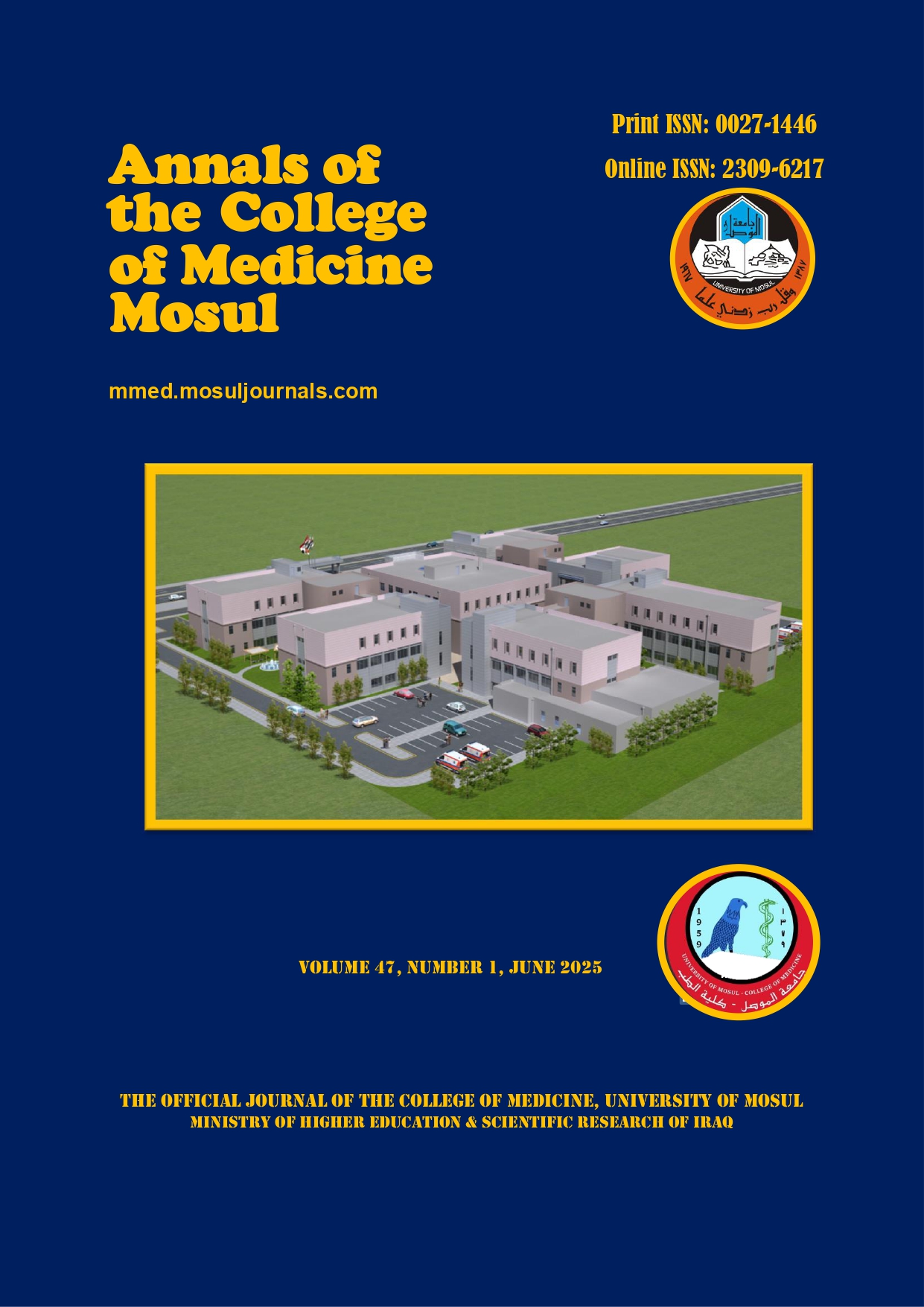Role of N-Terminal Pro-Brain Natriuretic Peptide (NT-proBNP) and Lipid Profile Parameters in Assessing the Severity of Coronary Artery Occlusion
Abstract
Background: Coronary artery disease is an extremely common heart ailment affecting millions of individuals around the globe and is one amongst the most common causes of morbidity and mortality. Several biomarkers are currently used for the diagnosis and management of cardiovascular diseases. Among them, N-terminal Pro-Brain Natriuretic Peptide (NT-ProBNP), is a true cardiac hormone exerting pleiotropic systemic effects.Aim of the study: To identify the role of plasma NT-ProBNP and atherogenic index (TG/HDL-C) in the prediction of the number of occluded coronary arteries and distinguish between them (single versus multiple vessels).Subjects and methods: This study was carried out at Mosul Center for Cardiology and Cardiac Surgery. It involved 90 patients (age 20 years) classified into three groups based on the findings of coronary angiography, each group consisted of 30 patients. Group I: included patients with no coronary artery occlusion and served as the control group, group II: CAD patients with single vessel occlusion, and group III: involved patients with CAD having multi-vessels occlusion (2 vessels or more).Plasma NT-proBNP, total cholesterol (TC), triglyceride (TG), low density lipoprotein-cholesterol (LDL-C), and high density lipoprotein- cholesterol (HDL-C) were measured for all patients and atherogenic index of plasma (AIP) was calculated ( as TG/HDL-C).Results: The study revealed that the mean (SD) value of plasma NT-proBNP was significantly higher in group III compared with group I and group II (P < 0.0001). In addition, the mean value of plasma NT Pro-BNP of group II was significantly increased in comparison with group I (p < 0.001). The mean values of AIP of group III and group II were significantly higher when compared to group I (p< 0.001 and 0.023 respectively), but with non-significant differences between group II and group III.Receiver operator characteristic (ROC) curve analysis showed that the optimal cutoff point for plasma NT-proBNP was 72.50 pg/ml for diagnosing CAD with the sensitivity of (81.7%) and the specificity of (80%) and that for AIP was 0.55 with the sensitivity of (70%) and the specificity of (70%) as well.Conclusion: Plasma levels of NT-ProBNP and /or atherogenic index of plasma can significantly predict the severity of coronary artery disease and differentiate between single and multi-vessels occlusion.
